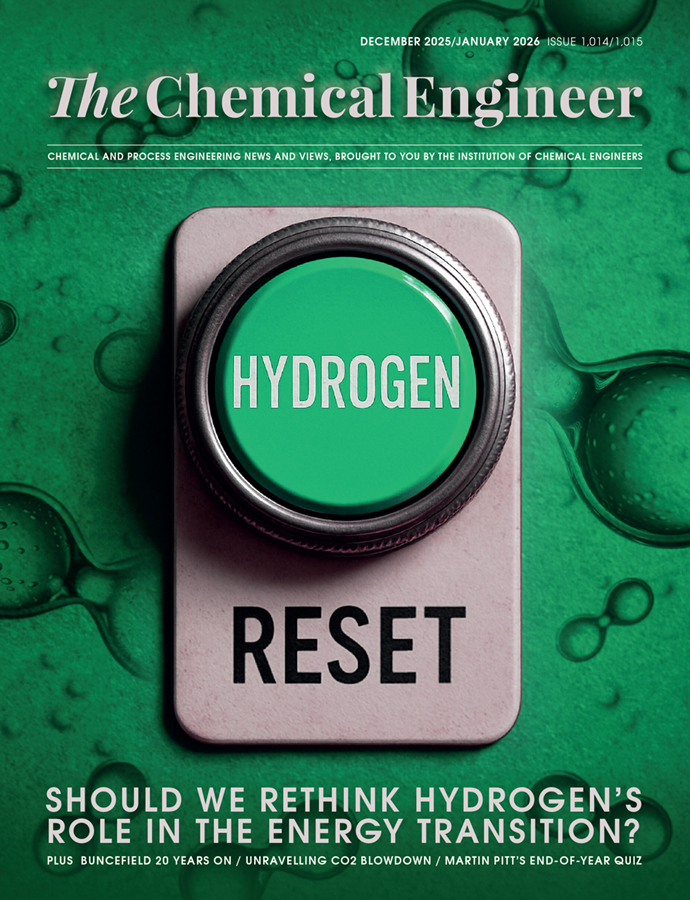Can HiiROC’s Zero-emission Hydrogen Pass the Tyre Test?
A startup hydrogen producer in Humberside, UK is promising to make the fuel with zero emissions. Sounds great – but the byproduct raises concerns in the long-term, writes Sam Baker
HYDROGEN is often hailed as a key energy source for a net zero future. Categorised by colour based on production methods – from grey to pink – the most hotly debated is blue hydrogen, made through steam methane reforming (SMR) of natural gas. For every 1 kg of hydrogen produced, the process produces around 9 kg of CO2 which must be captured and stored to make it worthwhile. But for many, uncertainty surrounding the commercial viability of carbon capture systems throws doubt on the overall feasibility of blue hydrogen.
HiiROC, a startup based in Humberside, UK, offers an alternative: it uses an electrically powered thermal plasma torch to break down hydrocarbons. Taking place in a series of separation chambers in the absence of oxygen, the torches heat the hydrocarbon molecules which decompose into elemental hydrogen gas and solid carbon black.
The main benefit of their process is that no carbon dioxide escapes into the atmosphere. However, the process yields a vast amount of carbon black as a byproduct – HiiROC’s first commercial plant is expected to produce over 3,500 t/y of hydrogen and 10,000 t/y of carbon black. HiiROC says it plans to “rapidly” scale to “several hundred thousand t/y from current projects in development” and would then be “targeting millions of t/y globally”.
The amount of carbon is so significant that HiiROC considers it a co-product of the business, with the company’s latest accounts describing their principal activity as production of “affordable clean hydrogen and carbon black”. The UK carbon black market is around 15m t/y, which HiiROC believes it can move into.
One of the biggest carbon black customers is the tyre industry. However, Geraint Evans, chair of IChemE’s Clean Energy Special Interest Group, warns that selling carbon black onto tyre manufacturers is a “risk” to HiiROC’s zero emissions credibility, since around 40% of all tyres in Europe are burned at the end of their lives, releasing CO2 into the atmosphere. If this were the fate for HiiROC’s carbon black, Evans believes their claim to produce “zero emission hydrogen” would be false, as ultimately the carbon would eventually be released.
“I encourage them to ensure that carbon does not end up in the atmosphere,” he says, stressing that it still applies even if it is years later when the carbon black has reached the end of its useful life.
Evans supports greater supplier responsibility for the end use of a product. In HiiROC’s case, he believes the company should “take ownership” of the carbon they place on the market. He said: “I would hope they are actively working with the end users to understand end-of-use applications of the products that carbon black goes into.
“They should be taking best steps and efforts to understand and manage the end-of-life treatment of their products.”
Adam Carthy, HiiROC’s lead carbon specialist, says that the company is planning to sell to existing carbon black customers, including tyre manufacturers, as well as paints, coatings, inks and long-lasting plastics producers. He added that HiiROC is “in conversations with potential users”.
As for the end-of-life treatment of the products made with HiiROC’s carbon black, Carthy says “it’s important for us that we see those products recycled where possible”. In the case of tyres, Carthy points out that “there’s a lot of work going on in that industry at the moment” such as increased recycling1 and material recovery rates.
Evans says he is “encouraged” that HiiROC is “thinking about the carbon performance of their process”, but stresses they must “take positive action to support the end of life” of their carbon black.
Carbon black magic
HiiROC currently operates one facility – a pilot plant at the Centrica power station in Lincolnshire, UK – with plans for commercial production of hydrogen and carbon black in 2026. Alongside agreeing hydrogen deals, HiiROC is looking to market its carbon black as a “clean, pure and scalable” version of the existing supply. “That’s what we’re hearing that the market wants,” says Carthy.
Carthy says that while conventional carbon black production “makes a fantastic product”, the process is “dirty” and has a “large carbon footprint”. Typically, carbon black is produced from the thermal decomposition of oil. The process releases a tail gas containing CO2, particulates, nitrous oxides and carbon disulphide – a “host of noxious emissions”, as Carthy describes it.
HiiROC’s production is essentially “an electrification of the process”, Carthy says. “We have no combustion of any kind taking place on the plant, so it’s purely electricity driving a plasma and using that plasma energy to disassociate the molecules coming in. It’s a completely zero emission process.”
Carthy is confident carbon black users want to lower their emissions footprints. He believes that the best way for users to do that is “to swap out the carbon black for something with lower emissions associated with it”. Other manufacturers are looking at alternative methods to produce low-emission carbon black, but Carthy believes they “tend to fall down at either purity, scalability or economics”. He says HiiROC’s pilot plant “can produce a clean, a pure and desirable carbon black product”.

Hydrogen-fuelled debate
Much ink has been spilled, including in these pages, debating the merits of fossil-fuelled hydrogen production. Sceptics argue that the industry’s reliance on hydrocarbon feedstocks means it is largely bankrolled by oil and gas firms, whose deep pockets give them disproportionate influence over the energy transition. Proponents, meanwhile, argue that the skills and experience within the fossil fuel industry offer a valuable foundation for a rapid and effective transition. Hydrocarbon exploration and drilling jobs could be preserved, and much of the existing oil and gas infrastructure could remain in use with minimal disruption. HiiROC has certainly attracted attention from industries historically dependent on fossil fuels, counting German oil and gas company Wintershall Dea, and car makers Kia and Hyundai among its corporate shareholders, along with several green energy venture capital funds.
Hydrogen has two primary future use categories – as a fuel and as a feedstock. Early deals signed by HiiROC indicate it is planning to focus on supplying hydrogen as a fuel, counting cement-maker Cemex, and British Gas owner Centrica among its early investors. In November 2024 it was announced2 that HiiROC would trial hydrogen production to fuel the kilns at the Cemex cement works in Rugby, UK, from 2026. Meanwhile, in May, HiiROC partnered with the Saltend Chemicals Plant in Humberside3 to supply hydrogen to local manufacturers. An added attraction of HiiROC’s technology is its modular design, which will allow Saltend and Cemex to produce their own fuel onsite, albeit while still having to rely on shipping in hydrocarbon feedstocks.
Evans is sceptical of the use of hydrogen as a fuel, but believes it can play a limited role in the energy transition, including as a low-carbon chemical feedstock in fertiliser production and as a reductant in steelmaking. “I’m encouraged by all these new technologies, and I see a value for hydrogen, especially in the process industries,” he says. As for other energy intensive applications, Evans is a strong proponent for maximising electrification, including for transport, arguing that generating power from wind turbines guarantees a greater security than relying on imported natural gas, the feedstock for blue hydrogen.
HiiROC is certainly targeting a wide variety of sectors, and the company agrees with Evans on the importance of supporting the widespread rollout of renewables. CEO Tim Davies says the company’s current priorities are power management – “decarbonising dispatchable power and long duration storage to support the deployment of renewables” – and hard-to-abate sectors like steel and cement. Naturally, Davies describes hydrogen as a “pivotal” component in the goal of achieving net zero.
Whatever hydrogen is primarily used for in the energy transition, Davies says one thing is clear: the existing ways of making it are unsustainable, either due to emissions or to expense. “To unlock hydrogen’s full potential, we need a new way of making it, which is why we developed thermal plasma electrolysis,” he says.
What is also evident is that the hydrogen industry has come too far with too much money behind it to not find a place in decarbonised economies, whatever colour it may be. But as engineers continue down the path towards net zero, they must remain mindful of the second- and third-order consequences of the solutions they develop. Of course, this is just one of the many challenges and opportunities that will arise as new systems sweep in to help society decarbonise. As Davies says: “This is only the beginning.”
References
1. TCE: US researchers find new route for tyres that have reached the end of the road: https://bit.ly/tce-new-tyre-route
2. TCE: Cemex to install world-first hydrogen process at UK cement plant: https://bit.ly/tce-cemex-hydrogen
3. ABP, HiiROC and px Group team up to deliver low carbon hydrogen at Saltend: https://bit.ly/saltend-hydrogen
Recent Editions
Catch up on the latest news, views and jobs from The Chemical Engineer. Below are the four latest issues. View a wider selection of the archive from within the Magazine section of this site.




